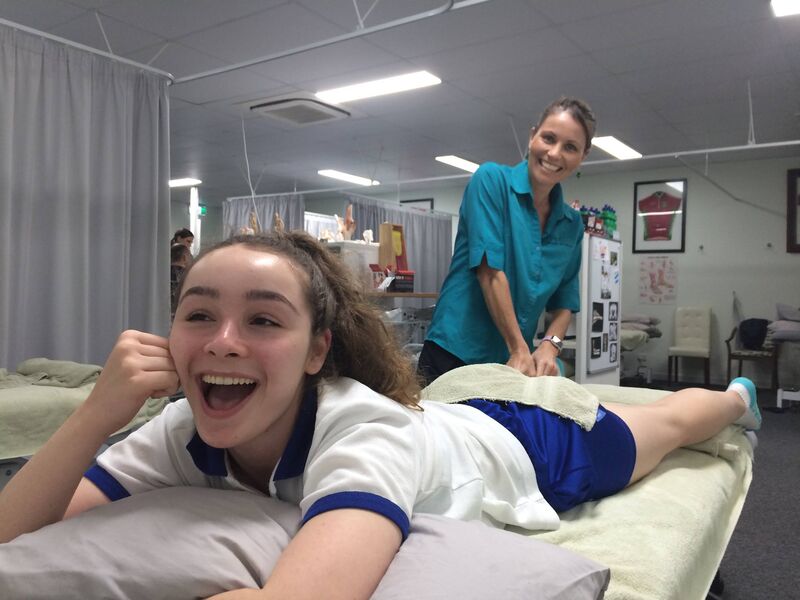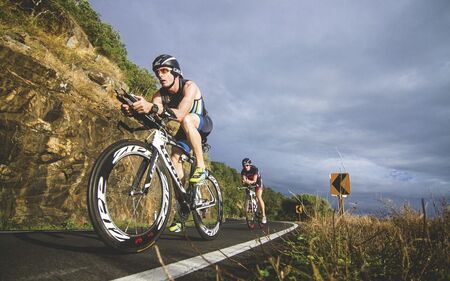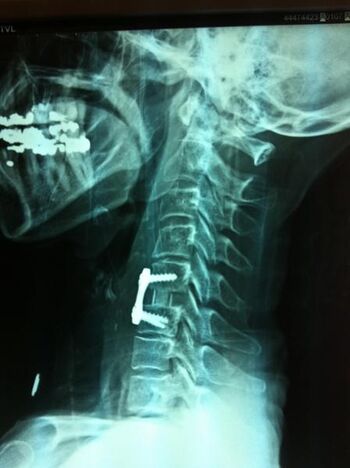Megan's 'greatest' injury list: Bingo, triathletes and lightning strikes!
TropicNow columnist and PhyxMe physio Megan Thomas digs into her career vault to reveal the craziest, toughest and most difficult injuries she's ever had to treat.

Over the past decade I have treated many different people in many different places.
That means I’ve come across many different injuries...in many different areas of the human body.
Recently someone asked me: “what are the best injuries you’ve ever treated?”
First I had to ask myself how one defines “best” when it comes to injuries. Shouldn’t that be “worst” injuries or “craziest” injuries? Or does it mean the injuries I enjoyed treating the most?
Then again, perhaps it means the injuries that got the best outcomes and were completely Phyx’d…
Given the nature of physiotherapy and the wide variety of injuries and patients we treat, I thought it was “best” to combine all of the above and write about the greatest injuries of my career.
So, in no particular order, here they are:
GILLIAN BARRE SYNDROME (GBS)
At the Prince of Wales Hospital in Sydney I cared for a man who had contracted the awful Gillian Barre Syndrome (GBS).
This condition is as close to being buried alive as it gets as the individual is locked inside their body, unable to move, communicate, eat or drink, however mentally they are fine.
They think, feel, dream, itch, ache and experience all emotions – they just have no ability to act on anything.
My GBS individual was locked inside his body for 355 days in the Intensive Care Unit. He was a tough farmer and a beautiful, gentle soul, and he worked every minute he was permitted when his body started to awaken.
In fact he was one of the most motivated individuals I have ever had the pleasure of treating. He left the hospital with near full recovery some two and a half years after his admission.

LIGHTNING STRIKE
At the same hospital I treated a backpacker who was literally struck by lightning on Bondi Beach.
The lightning bolt contacted his left shoulder and exited through his right hip, burning a hole through not only some internal organs but also his spinal cord, leaving him a paraplegic.
He was lucky to be alive, and I've never seen such a rare injury again.
SPINAL DISC REPLACEMENTS
They say injuries can come in cycles. Well, cervical disc replacements are truly a rare surgery and here in Cairns in the same six month period I had three patients who all had a cervical disc replacement!
The ages ranged from mid 30’s to mid 60’s and each was as scared and daunted by the proposed surgery (that entered through their throat) as the other.
However all three had amazingly successful outcomes and no longer require physiotherapy for their cervical spines.
UNLUCKY BREAKS
An unfortunately all too common household accident is falling off a ladder. And this very thing left a PhyxMe employee with a fractured pelvis in four places and the head snapped off one of his arm bones so that his arm is unlikely ever to function in the same way again.
However he is back on the ladder working away and as he is often told he is lucky he landed on his pelvis and elbow and not his head.
However you have to again ask how unlucky was he that he did fall and it was onto solid concrete and that the impact didn’t just neatly break his forearm but instead shattered his elbow, an injury I wished I had never seen but definitely up there with the greatest of my career.
AND THERE WAS THE TIME…
I clearly remember the time a post office owner literally crawled into the PhyxMe clinic on all fours due to debilitating back pain.
We prescribed a pillow and a call to the ambulance as many physiotherapists have had the type of patient that comes in with debilitating low back pain, with their spines more closely resembling a half open pocket knife or a Twistie, only to treat them and find they are then stuck in whatever position you treated them in due to overwhelming muscle spasm.
The next day he walked into PhyxMe with a bottle of champagne in hand to thank us for our first aid (healing without even touching him) and to start his core-strengthening program.

WHEN IT GOES POP
If as a physio you have never relocated a shoulder, you are truly missing out on a great joy in life.
The feeling that overwhelms you (I like to call us the Relocator) is indescribable, let alone the person who has just had their normal shoulder anatomy restored.
I still remember my first relocation. It was a huge Tongan rugby player and here’s little me hanging my 50 kg's off his arm to pop it back in.
My most recent relocation happened just two metres from the sideline where I was standing and the shoulder was back in before the player and spectators even realised what had happened.
In between those two, I've had over 20 relocations, each as memorable for me and devastatingly tragic for the athlete as the last.
BINGO
The incredibly fit 80-year-old that jumps up to announce her ‘BINGO’ success only to feel her thigh bone shatter underneath her and give way.
She had recently had a hip replacement revision and that trauma associated with her osteoporosis lead to forces the femur couldn’t handle.
Another round of surgery and some more impressive metalwork and she was back to swimming, gardening, climbing ladders and playing Bingo in no time.
WHEN ONE BECOMES TWO
New mums that see you on an emergency plea from their doctors because their baby created a larger than normal birthing canal and the mum feels as though nothing will ever be normal again.
It is a wonderful feeling to give them hope, teach them how to cope and see them gratefully back exercising and ‘normal again’ in a matter of weeks.
TRIATHLETES
What a bitter sweet sector of the population triathletes are for a physiotherapist to treat.
Oh have I had a few of these; anyone who has anything to do with triathlon will know what a special breed they are.
Motivated beyond belief and an amazing ability to ignore pain, they are always of course devastated to hear that they can't do 12 training sessions that week and may miss their long run on Sunday.
However, they are also committed 110 percent to their rehabilitation program and never fail to stretch, roll, eat, strengthen, tape, ice or heat.



